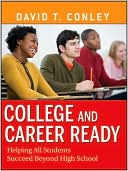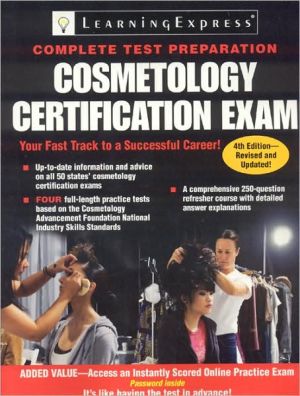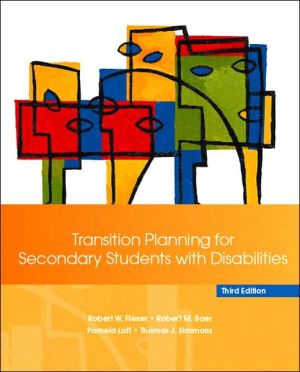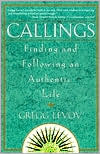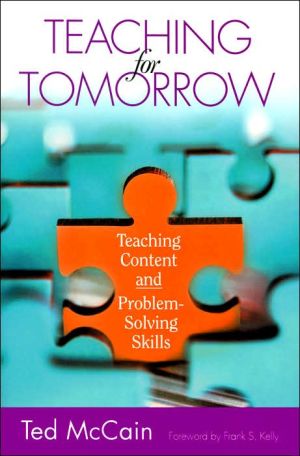Building ASL Interpreting and Translation Skills: Narratives for Practice
Written in a workbook fashion and designed as a teaching/learning vehicle, Building ASL Interpreting and Translation Skills is for students taking courses in American Sign Language (Levels I, II or III), as well as students enrolled in interpreting programs. The written English narratives are designed for translation, interpreting, and transliterating with over 80 examples on the companion DVD signed by both a native Deaf individual and nationally certified interpreters.\ Building ASL...
Search in google:
Written in a workbook fashion and designed as a teaching / learning vehicle, Building ASL Interpreting and Translation Skills is for students taking courses in American Sign Language (levels I, II or III), as well as students enrolled in interpreting programs. The written English narratives are designed for translation, interpreting and transliterating with over 80 examples on the companion DVD signed by both native Deaf individuals and nationally certified interpreters.The book is divided into four parts.Part I:The first part of the text consists of 24 chapters that provide readers with an overview of a variety of ASL grammatical features. Each chapter includes an example glossed into ASL to provide students with a model for translation, each of which are signed on the accompanying DVD, followed by narratives for student practice that gradually increase in length and difficulty. Part IIThe second part of the text consists of 20 chapters covering additional grammatical features. The selections become increasingly longer in length. Selections in the first several chapters of Part II are also signed by a Deaf individual on the companion DVD. As the selections become longer, a nationally certified interpreter interprets selected narratives modeling the ASL principle described in the chapter.Part III:The third part of the text is devoted to exercises that focus on building automaticity when confronting multiple meaning words, idioms, and college level vocabulary. These selections are longer in length and are designed to provide interpreters with source material that covers a wide variety of topics.Part IV:The fourth part of the text includes narratives, lectures, and passages from texts that might be read in a high school or college class.FEATURES OF THIS NEW TEXT: Part I & Part II include information on ASL grammatical features and provides readers with examples of how to gloss the selections. These examples are also demonstrated on the accompanying DVD as a visual aid to help future interpreters. Readers are taught how to work with multiple meaning words, idioms, and are provided with vocabulary building exercises The workbook design allows students opportunity to compare what their written responses to the exercises with what they see on the accompanying DVD. Enclosed DVD allows students to see some of the narratives signed and interpreted and provides students with visual examples and role models of what the ASL principles look in action.
PrefaceTranscription SymbolsPart I: Selections for Beginning ASL StudentsChapter One: Pronouns, Locations, and Use of Sign SpaceChapter Two: Directional Verbs Chapter Three: Descriptive Adjectives Chapter Four: Noun/Verb Pairs Chapter Five: Topic/Comment Chapter Six: Negation, Negative Incorporation & Modals Chapter Seven: Classifiers: Describing Location and Movement Chapter Eight: Establishing Tense in ASL Chapter Nine: Age, Time and Counting Numbers Chapter Ten: Additional Work with Classifiers Chapter Eleven: Expressing Negatives using None Chapter Twelve: Additional Work with Noun/Verb Pairs Chapter Thirteen: Conditionals Chapter Fourteen: Use of Finish as a ConjunctionChapter Fifteen: Additional work with Verb Pairs Chapter Sixteen: Giving Directions in ASLChapter Seventeen: Working With TimeChapter Eighteen: Quantifiers Chapter Nineteen: Repeatedly, Continually & Reduplication Chapter Twenty: Changing Adjectives to Indicate Repetition Chapter Twenty-one: Rhetorical Questions Chapter Twenty-two: Additional Ways to Form Negatives Chapter Twenty-three: Additional Work Signing Topics Chapter Twenty-four: Classifiers that Show Movement and Distance Part II: Selections for Intermediate ASL StudentsChapter One: Additional Work with Topic/Comment Chapter Two: Using Reference Points to Mark LocationsChapter Three: Using Semantic Classifiers to Mark Location & Movement Chapter Four: Time Chapter Five: Listing, Grouping, Prioritizing Chapter Six: Role Shifting Chapter Seven: Contrasting and Comparing Chapter Eight: Instrument Classifiers Chapter Nine: Characterization Chapter Ten: More Work with Conjunctions Chapter Eleven: Active/Passive Voice=Chapter Twelve: Sequencing Chapter Thirteen: Supplemental SelectionsChapter Fourteen: Supplemental SelectionsChapter Fifteen: Supplemental SelectionsChapter Sixteen: Supplemental SelectionsChapter Seventeen: Supplemental SelectionsChapter Eighteen: Supplemental SelectionsChapter Nineteen: Supplemental SelectionsChapter Twenty: Supplemental SelectionsPart III: Multiple Meaning Words, Idioms, and Vocabulary BuildingChapter 1: Run, Down, Call, Make, LookChapter 2: Place, Up, Break, Fix, ByChapter 3: Charge, Advance, Around, Back, RightChapter 4: See, Take, Time, About, RaiseChapter 5: Short, Bank, Fall, Get Out, LineChapter 6: Put, Pass, Shake, Pick, OnChapter 7: After, Bare, Cool, Draw, MeetChapter Eight: Box, Blow, Eat, Ring, JumpChapter Nine: Out, Use, Over, Kick, MindChapter Ten: Bone, Miss, Low, Cut, PointChapter Eleven: IdiomsChapter Twelve: Additional Work with IdiomsChapter Thirteen: Additional Work with IdiomsChapter Fourteen: Additional Work with IdiomsChapter Fifteen: Working with IdiomsChapter Sixteen: Vocabulary Building ExercisesChapter Seventeen: Additional Vocabulary Building ActivitiesChapter Eighteen: Additional Vocabulary Building ActivitiesChapter Nineteen: Additional Vocabulary Building ActivitiesChapter Twenty: Additional Vocabulary Building ActivitiesPart IV: Selections for Interpreting and TransliteratingChapter 1Selection 1.1: Reading RecoverySelection 1.2: The WeddingSelection 1.3: Baking BreadSelection 1.4: Applying for a JobSelection 1.5: Traveling to EuropeChapter 2Selection 2.1: Award WinnersSelection 2.2: Getting Stuck in the MudSelection 2.3: Drive through Flu ShotsSelection 2.4: Displays at the Grocery StoreSelection 2.5: Dog ShowsChapter ThreeSelection 3.1: Going Hunting in the Deer StandSelection 3.2: Ice Skaters at the World GamesSelection 3.3: Homes of the Rich and FamousSelection 3.4: Waiting Tables can be Hard WorkSelection 3.5: Children’s GamesChapter FourSelection 4.1: Slalom on the Ski SlopesSelection 4.2: The Food PyramidSelection 4.3: Graduating From GallaudetSelection 4.4: Daisies, Brownies, and Girl ScoutsSelection 4.5: Tim’s Trip to the KennelChapter FiveSelection 5.1: Writing a Research PaperSelection 5.2: Using Examples and IllustrationsSelection 5.3: Working with Students who Need Speech TherapySelection 5.4: Comparing and ContrastingSelection 5.5: My First Grade SantaChapter SixSelection 6.1: Down Home DaysSelection 6.2: Spinal InjurySelection 6.3: Using All My SmartsSelection 6.4: Main Processes of the Memory SystemSelection 6.5: My DogChapter SevenSelection 7.1: The AirportSelection 7.2: The CircleSelection 7.3: Classrooms Yesterday and TodaySelection 7.4: First Immigration Wave: Mid-1800s to Early 1900sSelection 7.5: The SmoothChapter EightSelection 8.1: Terrain and TemperatureSelection 8.2: Music: Originals and RemakesSelection 8.3: Team SportsSelection 8.4: Bailey, Hudson and TazSelection 8.5: Car ColorsChapter NineSelection 9.1: Coffee Pots versus Single-serving Coffee ContainersSelection 9.2: The Traffic TicketSelection 9.3: Video conferencing TechnologySelection 9.4: Candidates for Governor Spout PlatformsSelection 9.5: The Soup BowlsChapter TenSelection 10.1: Banking ServicesSelection 10.2: The Bridal ShowSelection 10.3: Interpreting Math ProblemsSelection 10.4: What is expected of the Educational Interpreter in the Elementary Setting?Selection 10.5: Literacy and the English Language LearnerChapter ElevenSelection 11.1: Earl WarrenSelection 11.2: The Solar SystemSelection 11.3: Time ZonesSelection 11.4: Flying KitesSelection 11.5: Rescue from the Third FloorChapter TwelveSelection 12.1: Live versus Automated Phone Customer ServiceSelection 12.2: Teaching Deaf Studies in Included ClassroomsSelection 12.3: Cruise Lines Keep Adding New AttractionsSelection 12.4: Teaching Tolerance to Young ChildrenSelection 12.5: Deaf, Deaf WorldChapter ThirteenSelection 13.1: The BlizzardSelection 13.2: Trying out for the Dance LineSelection 13.3: Bike Across AmericaSelection 13.4: Cat LoversSelection 13.5: The Hundredth Day of SchoolChapter FourteenSelection 14.1: A Walk in the WoodsSelection 14.2: Barbara the PigSelection 14.3: Violet’s Tanning ExperienceSelection 14.4: The Pizza PartySelection 14.5: The U TurnChapter FifteenSelection 15.1: TTY’sSelection 15.2: Working as a Parking Lot Attendant at Disney WorldSelection 15.3: Getting Stuck in the Dressing RoomSelection 15.4: The Money PitSelection 15.5: Immersion Weekends for InterpretersChapter SixteenSelection 16.1: Driving on the IceSelection 16.2: InstructorsSelection 16.3: The CruiseSelection 16.4: Adult Day CareSelection 16.5: Living with Deaf PeopleChapter SeventeenSelection 17.1: Car Shows on MTVSelection 17.2: Levels of Cognitive FunctioningSelection 17.3: Seasons of the YearSelection 17.4: How to be a Good ManagerSelection 17.5: Local Fast Food Chain Pushes its New ImageChapter EighteenSelection 18.1: Travels by ReneeSelection 18.2: My Tropical Fish HobbySelection 18.3: Jimmy CarterSelection 18.4: Sky Warn for DeafSelection 18.5: JamaicaChapter NineteenSelection 19.1: Police ChaplainSelection 19.2: Ham RadioSelection 19.3: Conduct of Police OfficersSelection 19.4: Death NotificationSelection 19.5: A Story about My DadChapter TwentySelection 20.1: Let’s Talk about WalesSelection 20.2: A Lecture regarding Psychosocial Aspects of DeafnessSelection 20.3: Feeding the Hungry across AmericaSelection 20.4: My Best Friend EmilySelection 20.5: The Girls

